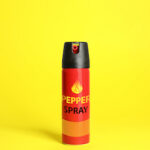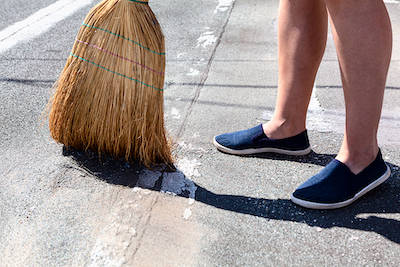When it comes to keeping our spaces clean, choosing the right broom is more important than we might think. Brooms come in various shapes, sizes, and materials, each offering different benefits for specific cleaning tasks. Two popular types are the traditional corn broom and the more modern synthetic broom. Let’s dive into a detailed comparison of these two, keeping our discussion accessible for everyone, including ninth graders.
Origin and Materials
Corn Broom: As the name suggests, a corn broom is made from the natural fibers of a corn plant, specifically the tassel part. These fibers are tied together around a wooden or metal handle. The natural stiffness of corn fibers makes these brooms ideal for sweeping up larger debris.
Synthetic Broom: Synthetic brooms are made from man-made materials, like plastic or nylon. These fibers are also attached to a handle, which can be made of plastic or metal. The synthetic fibers can be designed to have various levels of stiffness and flexibility, catering to different cleaning needs.
Effectiveness in Cleaning
Corn Broom: The stiff, natural fibers of a corn broom are excellent for cleaning outdoor areas or any space where you might find larger pieces of debris, like leaves or small twigs. They work well on rough surfaces, as their natural bristles can get into cracks and uneven areas easily.
Synthetic Broom: Synthetic brooms are versatile and can be designed for specific tasks. Soft-bristled synthetic brooms are great for indoor use, especially on smooth floors like hardwood, linoleum, or tile. They can pick up fine dust and hair better than corn brooms due to the finer and more flexible bristles.
Durability and Lifespan
Corn Broom: While offering a natural and effective cleaning solution, corn brooms can wear out faster than synthetic ones, especially if used frequently on rough surfaces. They can also be prone to mold and mildew if not stored properly or if they remain wet for too long.
Synthetic Broom: Synthetic brooms generally last longer than corn brooms. They’re less susceptible to damage from water and don’t easily harbor mold or mildew. However, exposure to sunlight and chemicals can break down the synthetic fibers over time.
Environmental Impact
Corn Broom: Being made from natural materials, corn brooms are more environmentally friendly. They are biodegradable and come from a renewable resource. However, the process of growing corn and turning it into brooms does have an environmental footprint.
Synthetic Broom: Synthetic brooms, made from plastics and other man-made materials, are not biodegradable. This means they can contribute to landfill waste when discarded. On the flip side, they often last longer, reducing the frequency of replacement.
Cost
Corn Broom: Generally, corn brooms can be more affordable upfront due to the natural materials used. However, considering they may need to be replaced more often, the long-term cost could be higher.
Synthetic Broom: Synthetic brooms might come with a higher price tag initially, but their durability and longer lifespan can make them more cost-effective in the long run.
Conclusion
Choosing between a corn broom and a synthetic broom depends on your specific cleaning needs, budget, and environmental considerations. If you’re looking for a natural, biodegradable option for outdoor use, a corn broom could be the way to go. For indoor use, especially on smooth surfaces, and for a longer-lasting solution, a synthetic broom might be more suitable. Regardless of your choice, both types of brooms have their place in keeping our living spaces clean and tidy.










